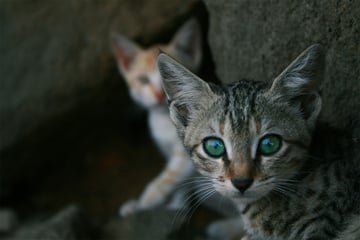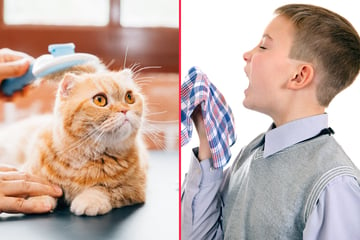How old is my cat? How to tell your cat's age
Many people don't actually know how old their cat is, whether it's because they adopted it from a shelter or have just lost track. How can you tell your cat's age, though, and how do you convert it to human years?
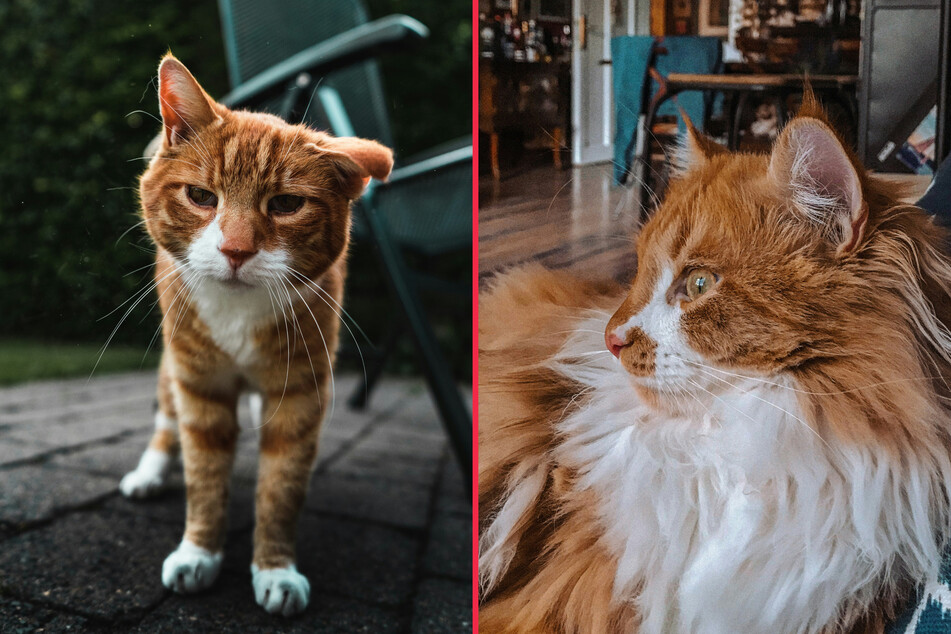
The age of your cat might not seem too important initially, but it is something that will get gradually more vital as your pet grows older and older.
As such, you should try to figure out at least a vague age even if you adopted a senior kitty from a shelter.
This will allow you to better plan for your cat's health journey and get it the best possible treatment should the need arise.
So you might wonder, how old is my cat and how can I figure out its age?
It's not as complicated as you might think! You can tell a cat's ballpark age by its looks and behavior – but how do you then convert that to equivalent human years?
How old is my cat?
Ultimately, your cat's age is only something that can be determined by your veterinarian. If you are unsure what age your cat is, perhaps because you adopted it from an animal shelter that had no idea when it was born and where it came from, then it is better to have your new kitty looked at professionally.
As a cat ages, it will gradually develop more and more health issues which will eventually lead to serious problems that need to be addressed. When you adopt a cat, it's important to find out as much as possible so that both your family and your veterinarian have a full picture.
If you fail to stay up-to-date on everything there is to know about your cat, your pet may end up leading a shorter life than necessary. Age is the first step in this process of discovery, and while you may never find out its exact birthday, you should be able to get a rough idea.
A cat's most important developmental time is its first year, which is equivalent to our human childhood and the beginning of our adolescence. Its second year is the next most important, which is the equivalent to adolescence and early adulthood.
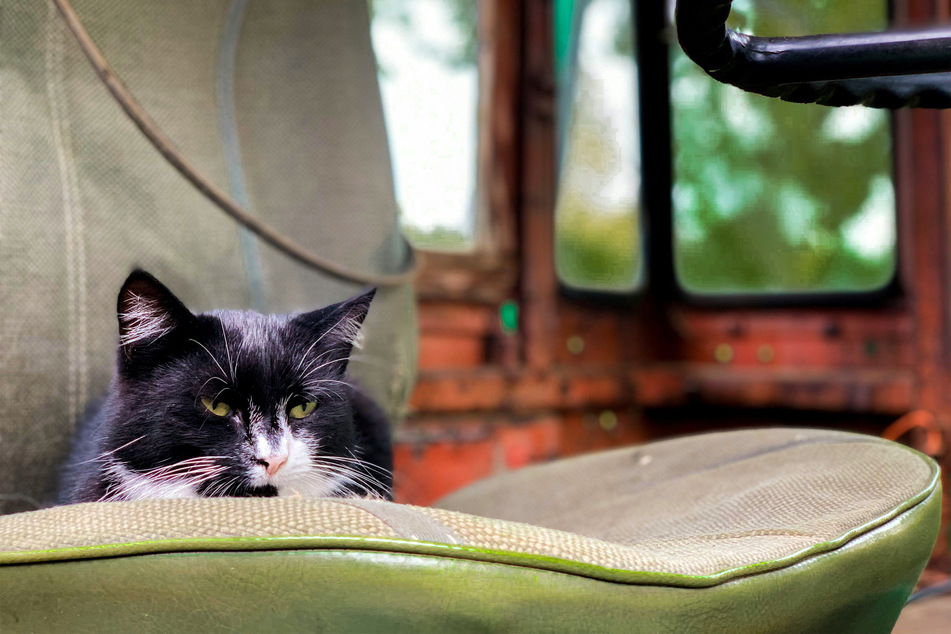
Cat years to human years
The concept of "cat years" has been called a "popular legend" by pet experts at Purina. While you can certainly track a cat's development and compare it to equivalent developmental steps in a human's life, it is not as simple as "every cat year is seven human years."
With that in mind, it still isn't particularly hard to define what a "cat year" is and track the progress of a cat's life through its equivalent age in human years. The difference between what is popularly known and what is generally agreed among scientists is that "cat years," in many ways, are not a linear scale.
It is generally agreed – by not only Purina but also a variety of other pet authorities such as PetMD and Companion Veterinary Hospital – that the first year of a cat's life is equivalent to approximately 15-18 years of a human life. This is, of course, dependent on the cat itself and the developmental situation it has found itself in over the course of its youth.
A cat then finishes its development during its second year, ending up at about the point at which a human is considered "fully grown." As a result, in a cat's first year, it ends up at about 15-18 human years old developmentally. In a cat's second year, it ends up at about 25-28 human years old.
At this point, all the main developmental steps are complete for your cat, and it can operate as a fully grown adult kitty. There's no more reason to be cautious of developmental milestones and no need to worry that something you will do might stymie its growth.
Having grown to about 25 human years by the time that it is only two actual years old, a cat will then continue to age at the equivalent rate of about four human years per real year. From here on it is quite a straight line, and pretty easy to follow.
How old is my cat in human years?
To make things as simple and easy as we can, we're going to list the relevant ages here to determine at what point in its life cycle your cat currently sits. Remember that this is not set in stone and many cats may live well past the 20-year mark, so try not to worry too much if you've got an old-but-healthy kitty!
Here are the equivalent cat years for each real year:
- One real year: 15 cat years
- Two real years: 25 cat years
- Three real years: 29 cat years
- Four real years: 33 cat years
- Five real years: 37 cat years
- Six real years: 41 cat years
- Seven real years: 45 cat years
- Eight real years: 49 cat years
- Nine real years: 53 cat years
- Ten real years: 57 cat years
- 11 real years: 61 cat years
- 12 real years: 65 cat years
- 13 real years: 69 cat years
- 14 real years: 73 cat years
- 15 real years: 77 cat years
- 16 real years: 81 cat years
- 17 real years: 85 cat years
- 18 real years: 89 cat years
- 19 real years: 93 cat years
- 20 real years: 97 cat years
Please keep in mind: All of these numbers are vague calculations based on a formula that simply will not work for every cat. In addition, it is a flawed idea to say that a cat ages in the same way that a human ages – comparatively, a cat at 20 is likely to be more capable of physical feats than a human at 97.
How can I tell how old my cat is?
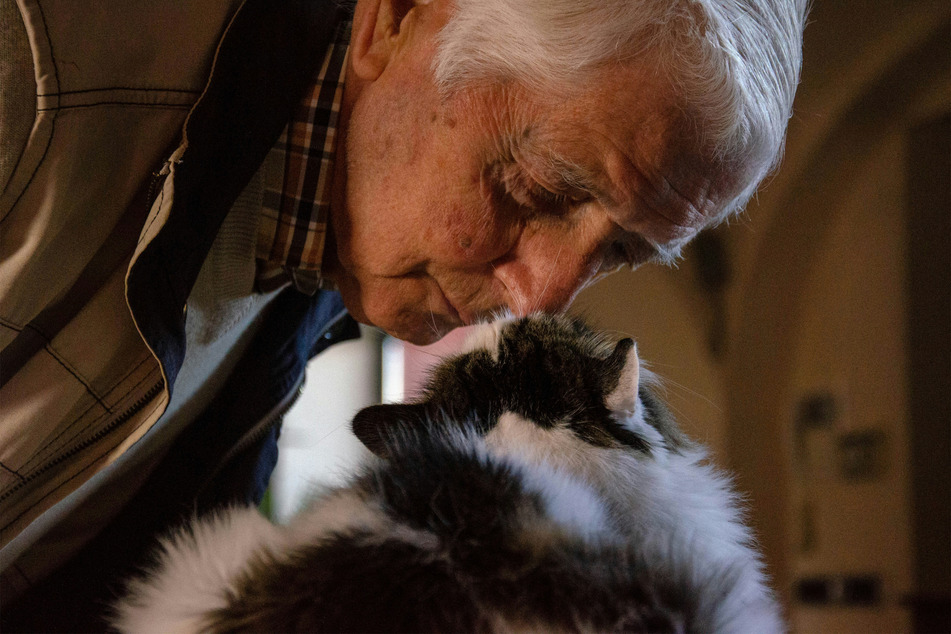
If you really want to know how old your cat is, the best thing you can do is simply consult a trained veterinarian. As a medical professional, this person will be able to perform a variety of tests and observations that you are not capable or trained to carry out and analyze yourself.
With that in mind, there are a few telltale signs to look out for if you want to gather a general idea of how old your cat is before you head to the vet.
Use these signs to determine a very rough idea of how old your cat is before you adopt it, but not as an alternative to having it properly checked out.
Here's how to tell your cat's age:
- Have you looked at its teeth? When a cat is about two weeks old, it will get its first baby teeth. These will then fall out at about 4–5 months, with their adult teeth completely grown at about the seven-month mark. If they clearly have adult teeth, then take a look at the wear and tear that's present. How yellow are they, are there many chips, and does its breath smell?
- How much does the cat weigh? As a cat gets older and older, it will generally increase in weight as well. Starting off very tiny and light as a kitten, but getting quite heavy by the time it is fully grown. You can tell that a cat is getting significantly older, though, by the fact that they often reduce in weight once they get over the age of about 15.
- How big is the cat? The same goes for its physical size. As a cat gets older, it will get bigger and stronger. This will peak at between 10–15 years and then will decline as they get weaker, frailer, and lighter.
- What about your cat's eyes? You can tell that a cat is around 6 or 7 years old because its eye lenses will become significantly denser. This will be more noticeable for owners who do not have professional equipment, however, at about 10 years old. It is easy to notice this phenomenon based on clouding on the surface of your cat's eyes.
- Do cat grooming habits change as they age? As kittens, cats are not great at cleaning themselves and will get cleaned by their mothers. Once they have left the litter, though, it's up to them. Young to middle-aged cats will learn to clean themselves and will make sure to stay in tip-top shape. As they get older (about 15-plus), cats tend to get quite scruffy and noticeably struggle to maintain their grooming habits.
- How does your cat look when walking? Older cats have a nasty habit of developing arthritis, making it quite painful at times for them to walk. If your kitty is limping, this could potentially be the cause. We won't say anymore, because if it is limping you should immediately go to the vet as this could potentially be a serious medical problem.
Be very careful about making any precise assessments based on these categories alone. Some cats may suffer from deteriorated teeth at a young age, for example, and all of these factors are not necessarily entirely reliable.
Instead, make sure that your veterinarian is kept well-informed and consulted about every step of your cat companion's journey. Be cautious, and make sure to show some love to that fluffy little fellow whenever you can!
The whole "cat years to human years" thing doesn't really matter
As humans, we have a natural desire to personify every animal and creature we come across, and that goes double for our beloved feline friends. While we might compare the impact of aging on humans versus cats, it doesn't really make much sense at all.
In the end, your cat will age in a very different way than you will. After all, it has a much shorter life cycle when compared to the average human and will suffer very different aging symptoms.
Sure, there are similarities, but the idea that you would say a two or three-year-old cat is equivalent to a mid-20s human just makes no sense. Cats have different bodies, different hormones, and different behaviors. They are not the same as us, and constant comparisons will simply reiterate the idea that older cats need to be treated like older humans.
You'll definitely need to be careful with an old cat, but until it gets right to the end of its life, your cat will likely be more than competent! Don't worry, relax, and enjoy the precious time you have with your furry friend.
Cover photo: Collage: Unsplash/Louis Droege & Ekaterina Zagorska


